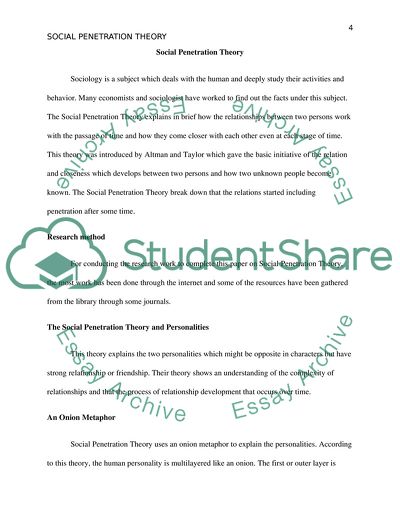Cite this document
(Social Penetration Theory Coursework Example | Topics and Well Written Essays - 1500 words, n.d.)
Social Penetration Theory Coursework Example | Topics and Well Written Essays - 1500 words. https://studentshare.org/journalism-communication/1775370-social-penetration-theory
Social Penetration Theory Coursework Example | Topics and Well Written Essays - 1500 words. https://studentshare.org/journalism-communication/1775370-social-penetration-theory
(Social Penetration Theory Coursework Example | Topics and Well Written Essays - 1500 Words)
Social Penetration Theory Coursework Example | Topics and Well Written Essays - 1500 Words. https://studentshare.org/journalism-communication/1775370-social-penetration-theory.
Social Penetration Theory Coursework Example | Topics and Well Written Essays - 1500 Words. https://studentshare.org/journalism-communication/1775370-social-penetration-theory.
“Social Penetration Theory Coursework Example | Topics and Well Written Essays - 1500 Words”. https://studentshare.org/journalism-communication/1775370-social-penetration-theory.


